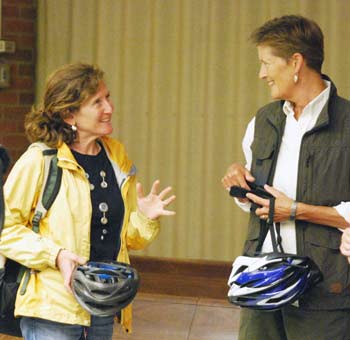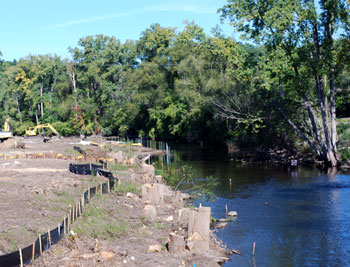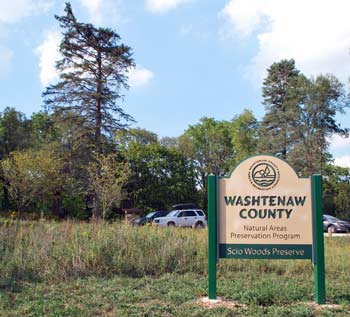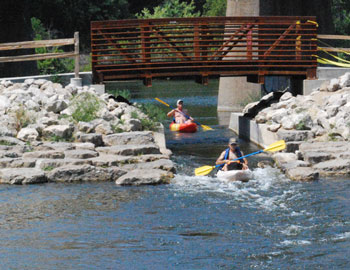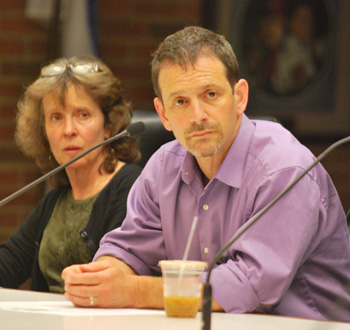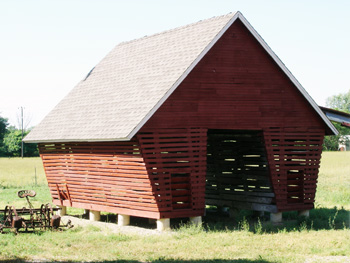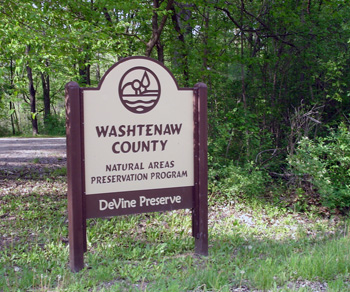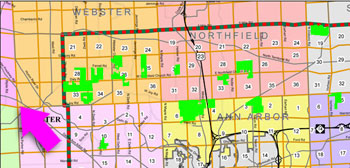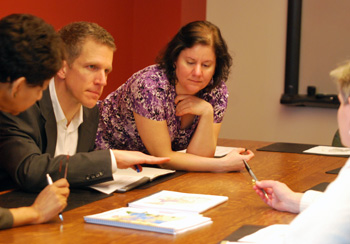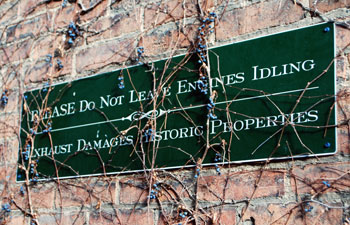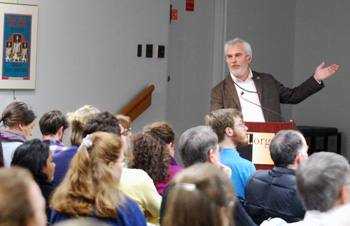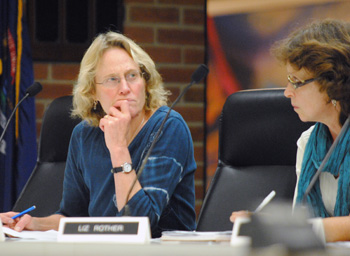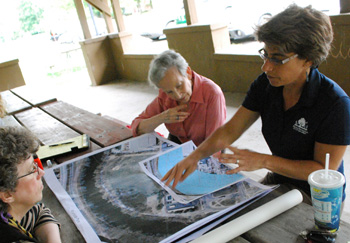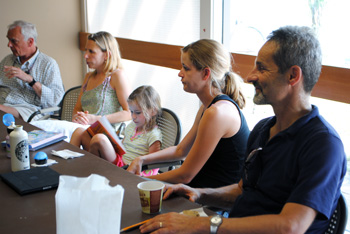Shelton to Hear Motions in FDD Case
The footing drain disconnection lawsuit filed against the city of Ann Arbor in late February has taken several procedural turns over the last six months, with virtually no issues on the merits of the case yet resolved.

From left: Assistant city attorney Abigail Elias, city attorney Stephen Postema and co-counsel for the plaintiffs Irvin Mermelstein. The photo is from the July 2, 2014 hearing on a preliminary injunction in the Yu v. Ann Arbor case, which judge Donald Shelton denied.
The latest procedural issues now appear set to be decided on Aug. 27, 2014 – judge Donald Shelton’s final motion day before his retirement.
The case involves a claim of unconstitutional takings – inverse condemnation. Plaintiffs in the case, Yu v. City of Ann Arbor, are three Ann Arbor residents who had their footing drains disconnected under the city FDD program.
The procedural issues that could be decided next week include a motion to disqualify the city attorney’s office from representing the city due to conflicts; a motion to sanction city attorneys for filing documents with statements that plaintiffs allege are not well-grounded in fact; and a motion to reassign the case to a judge other than Timothy Connors. All three motions were filed with the court on Wednesday, Aug. 20.
A dispute about whether those Aug. 20 filings were properly served upon the city is one of the issues Shelton could decide at the start of the hearing.
By way of background, the case was originally filed in the Washtenaw County 22nd circuit court and assigned to Shelton in late February. The city then removed the case to federal court. However, the plaintiffs moved for remand from the federal court back to the circuit court – a motion that was granted by judge Avern Cohn in late May.
When the case returned to the circuit court, plaintiffs filed a motion for a preliminary injunction, which was heard and denied by Shelton in early July. The city had filed a motion for summary disposition on June 9, which was originally scheduled for July 30. It was subsequently rescheduled by the city for Aug. 13, and then shifted by the city again to Sept. 18 – which is after Shelton’s scheduled retirement.
According to the court administrator’s office, the case will not officially be reassigned to a different judge until Sept. 2. However, when The Chronicle inquired with the 22nd circuit court’s central scheduling office, the staff indicated that the plan was to reassign all of Shelton’s civil cases to Connors. So the city’s paperwork scheduling of the Sept. 18 hearing specifies Connors as the judge. [Full Story]







